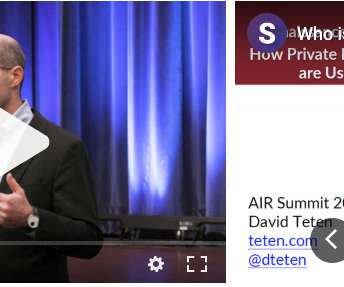How Private Equity and Venture Capital Investors Are Eating Their Own Dogfood
David Teten
SEPTEMBER 23, 2017
Private equity and venture capital investors are copying our sisters in the hedge fund and mutual fund world: we’re trying to automate more of our job. High-frequency trading, algorithmic by its nature, is estimated to account for at least 50% of US equity markets trading volume. . But we’re doing it slowly. Pitchbot.vc












Let's personalize your content